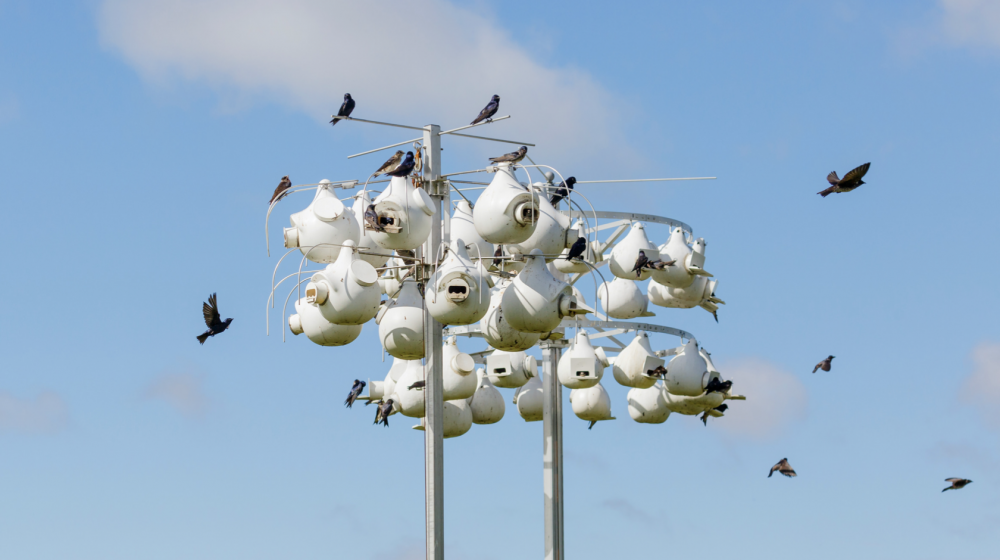How to Attract Purple Martins to Your Landscape

Place your martin houses on poles 15-20 feet above the ground in an open area. (Photo from Canva Pro)
Purple martins are a real treat to have grace your landscape. They offer hours of bird watching entertainment with their musical chatter, beautiful colors, and aerial acrobatics. Each year, purple martins migrate to North America from South America to nest. They arrive at varying times, but most tend to show up in March in Mississippi. To help welcome purple martins to your home, make sure you have the right kind of habitats for them.
These birds have become quite dependent on gourds and houses for nesting. If you want them to come to your yard, it’s best to provide at least four separate houses for them. Follow these blueprints in Publication 6344 to build a martin house that your bird friends are sure to love. These habitats can be made from wood, metal, or plastic; and should be placed on poles 15 to 20 feet above the ground.
Purple martin birdhouses need to be placed in open lawns because they like to approach the nests in long, gliding swoops. Avoid putting any homes near wooded areas, as owls may prey on the birds. Remember to place a water source nearby. It’s also a good idea to install predator guards on the poles to keep mischievous critters out of the birdhouses.
Remember to clean, maintain, and store the houses or gourds each year. An easy way to clean old nests from the houses is to use a spaghetti kitchen utensil to scrape out the nests. When purple martins are away, close the entrances of the houses until they return in the spring. Closing the holes with plastic cups will prevent English house sparrows and European starlings from invading the houses.
One common myth surrounding purple martins is that they will eliminate mosquitos in your landscape. Buying into this myth will only lead to disappointment. These birds mainly eat beetles, dragonflies, moths, butterflies, leafhoppers, horseflies, and wasps. They will occasionally eat mosquitos, but it only accounts for around one percent of their diet! If you have a mosquito problem, check out this blog post on ways to reduce mosquitos in your landscape.
For more information on ways to welcome wildlife into your landscape, check out Extension Publication 2402, “Establishing a Backyard Wildlife Habitat.”
Subscribe to Extension for Real Life
Fill in the information below to receive a weekly update of our blog posts.









